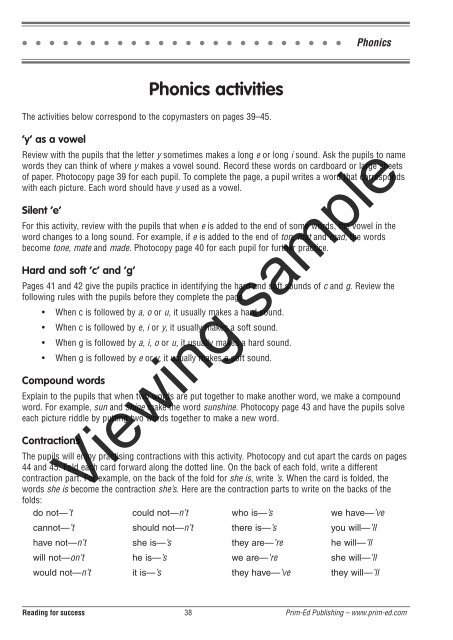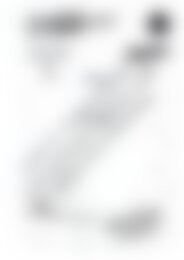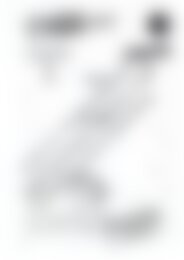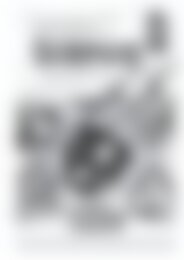PR-6218IRE Reading for Success - Book 3
Create successful ePaper yourself
Turn your PDF publications into a flip-book with our unique Google optimized e-Paper software.
Phonics<br />
Phonics activities<br />
The activities below correspond to the copymasters on pages 39–45.<br />
‘y’ as a vowel<br />
Review with the pupils that the letter y sometimes makes a long e or long i sound. Ask the pupils to name<br />
words they can think of where y makes a vowel sound. Record these words on cardboard or large sheets<br />
of paper. Photocopy page 39 <strong>for</strong> each pupil. To complete the page, a pupil writes a word that corresponds<br />
with each picture. Each word should have y used as a vowel.<br />
Silent ‘e’<br />
For this activity, review with the pupils that when e is added to the end of some words, the vowel in the<br />
word changes to a long sound. For example, if e is added to the end of ton, mat and mad, the words<br />
become tone, mate and made. Photocopy page 40 <strong>for</strong> each pupil <strong>for</strong> further practice.<br />
Hard and soft ‘c’ and ‘g’<br />
Pages 41 and 42 give the pupils practice in identifying the hard and soft sounds of c and g. Review the<br />
following rules with the pupils be<strong>for</strong>e they complete the page.<br />
• When c is followed by a, o or u, it usually makes a hard sound.<br />
• When c is followed by e, i or y, it usually makes a soft sound.<br />
• When g is followed by a, i, o or u, it usually makes a hard sound.<br />
• When g is followed by e or y, it usually makes a soft sound.<br />
Compound words<br />
Explain to the pupils that when two words are put together to make another word, we make a compound<br />
word. For example, sun and shine make the word sunshine. Photocopy page 43 and have the pupils solve<br />
each picture riddle by putting two words together to make a new word.<br />
Contractions<br />
The pupils will enjoy practising contractions with this activity. Photocopy and cut apart the cards on pages<br />
44 and 45. Fold each card <strong>for</strong>ward along the dotted line. On the back of each fold, write a different<br />
contraction part. For example, on the back of the fold <strong>for</strong> she is, write ’s. When the card is folded, the<br />
words she is become the contraction she’s. Here are the contraction parts to write on the backs of the<br />
folds:<br />
do not—’t<br />
cannot—’t<br />
have not—n’t<br />
will not—on’t<br />
would not—n’t<br />
could not—n’t<br />
should not—n’t<br />
she is—’s<br />
he is—’s<br />
it is—’s<br />
who is—’s<br />
there is—’s<br />
they are—’re<br />
we are—’re<br />
they have—’ve<br />
we have—’ve<br />
you will—’ll<br />
he will—’ll<br />
she will—’ll<br />
they will—’ll<br />
Viewing sample<br />
<strong>Reading</strong> <strong>for</strong> success 38 Prim-Ed Publishing – www.prim-ed.com


